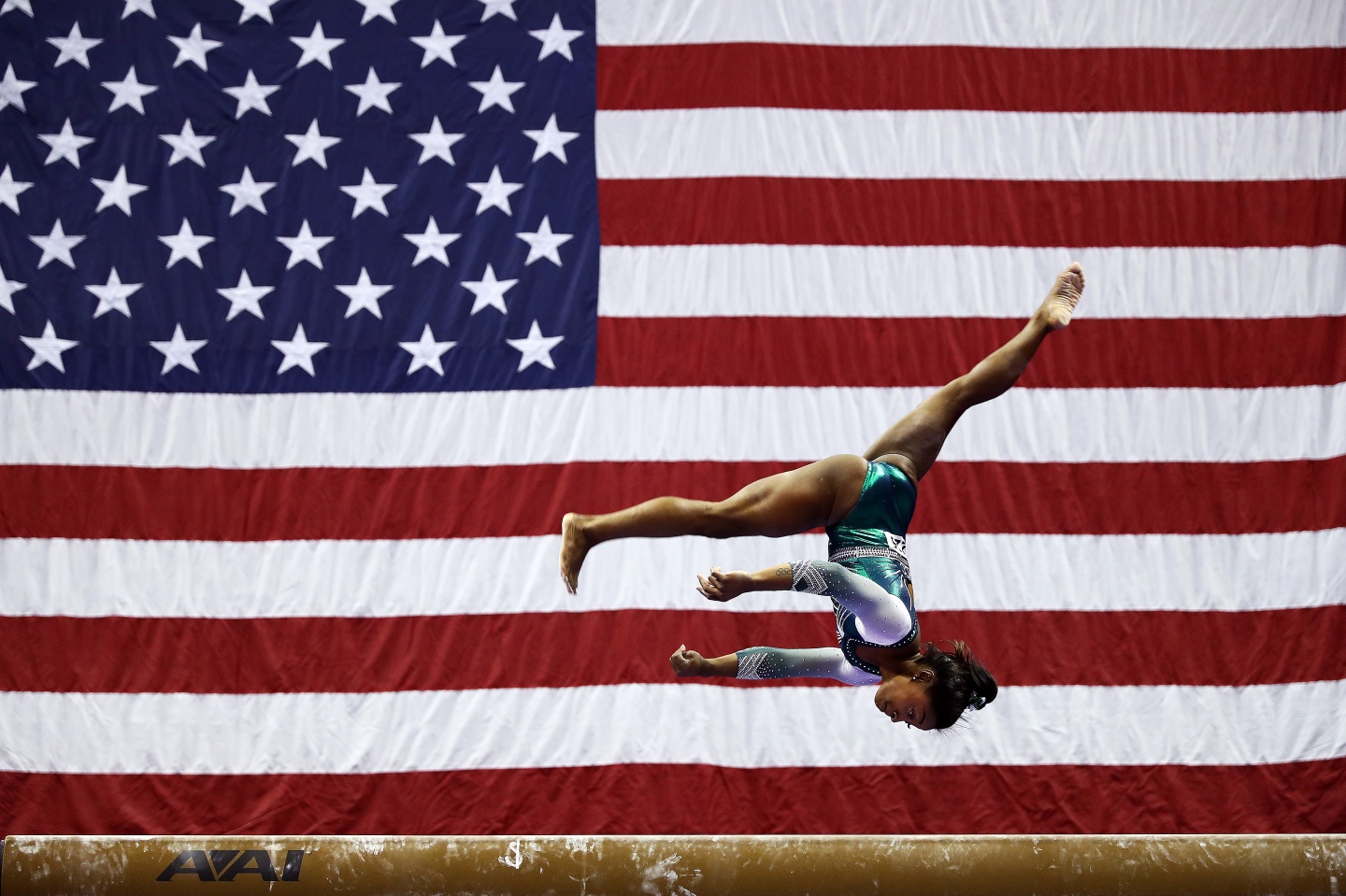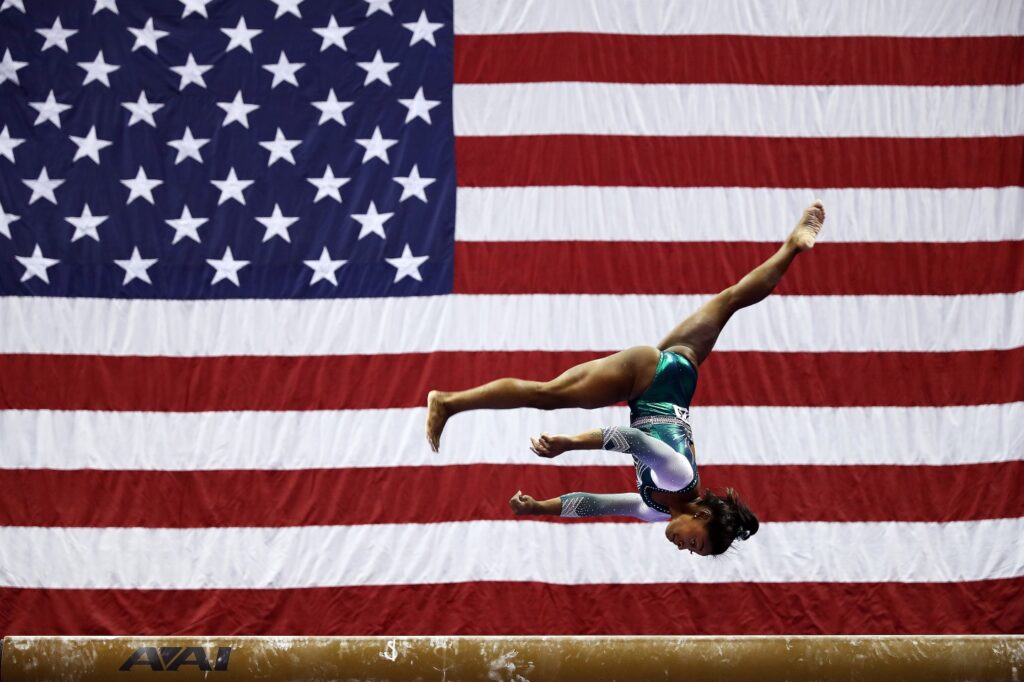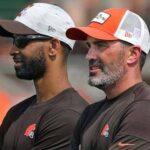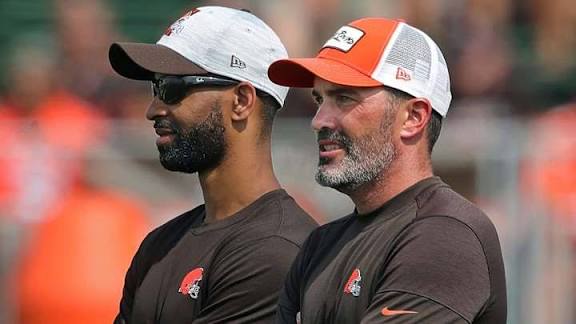Simone Biles competes on the balance beam during the Senior Women’s competition of the 2019 U.S. Gymnastics Championships.Jamie Squire Simone Biles competes on the balance beam during the Senior Women’s competition of the 2019 U.S. Gymnastics Championships.With all the hype around USA Gymnastics heading into the 2024 Summer Olympics, it’s easy to forget, for a moment, where the organization stood just six years ago.”Nobody was even concerned whether or not we were being sexually abused,” former Olympic gymnast Jordyn Wieber said at the trial of longtime USA Gymnastics doctor Larry Nassar. “I was not protected, and neither were my teammates. Larry Nassar is accountable. USA Gymnastics is accountable.”Nassar was sentenced to life in prison in 2018 after hundreds of young gymnasts came forward to say he’d used his position to sexually assault them.Lawsuits against the organization multiplied and major sponsors fled. USA Gymnastics was on the brink of being shut down by U.S. Olympic officials.Former gymnasts say the culture inside the organization had been problematic for decades, from grueling training schedules to pressure to perform through serious injuries.”What we experienced in the ’90s, it was evident that it was not a healthy culture,” former Olympic gymnast Dominique Dawes told NPR last month. She was part of the USA Gymnastics team that won the all-around gold medal at the 1996 Summer Olympics.”People talked about the toxic culture, they talked about the abuses. But I think people were just in awe of what we were able to accomplish… ’cause they’re like, ‘They made history!’ But people turned a blind eye to the abuse.”You’re reading the Consider This newsletter, which unpacks one major news story each day. Subscribe here to get it delivered to your inbox, and listen to more from the Consider This podcast.Measures to move forwardIn 2021, USA Gymnastics began to turn a corner.The organization settled a lawsuit from the victims of Nassar’s abuse, agreeing to pay out $380 million.It assigned a board seat to one of the survivors. And in 2022, it hired three new officials to run the organization.That includes Alicia Sacramone Quinn, a former Olympic gymnast who is now the program’s strategic lead.Quinn told NPR that nowadays, communication between USA Gymnastics and athletes is a lot more open than when she was a gymnast in the program.”I think it’s nice for us, because we know where they stand. And I think it’s great for them because we’re going to respect their knowledge of their own bodies, adjust the program so everybody’s on the same page.”But for Dawes, these changes are, perhaps, just a start.”I think there’s a perception that there’s a culture change,” she said. “For this generation that’s on the floor competing, I think it’s healthier for them. But we don’t know what’s happening for the younger generations, because they still don’t have a voice.”SafeSport and proving a commitmentAnother big change that came after the Nassar scandal was the opening of the U.S. Center for SafeSport.The organization was founded to create a formal process to investigate and respond to allegations of sexual abuse and misconduct in the Olympic community. But SafeSport says reports of such behavior have grown rapidly – and it doesn’t have the resources to keep up.Wall Street Journal sports reporter Louise Radnofsky joined Consider This host Ari Shapiro to discuss how effective SafeSport has proven to be. She says the process works like this:When someone reports an individual, the center will assess it, triage it and proceed to an intake process. If they proceed with a case, the people who are the subjects of the claims, or the victims, are supposed to receive a notice. Eventually, the alleged perpetrators should also receive notice of the allegations against them.Radnofsky says the Center for SafeSport is facing criticism and pressure for change in part because of how long the process can take, as well as a perceived lack of transparency about the outcome of the investigation.”There have been a number of high profile cases where the investigation has seemed to take a very long time, or an investigation is still going on. And it’s across a number of different sports,” she said.The only real public facing part of the process, she adds, is that if somebody is issued a very serious sanction, that will appear in a centralized database on the SafeSport website.In April, the center rolled out changes designed to bring more transparency to the process, particularly around the outcomes, in addition to trying to improve the timeliness of their case resolution.”Not nearly as much clarity as everybody would want, but more clarity than they’d been offering before,” Radnofsky said.For example, in the cases that have been resolved through 2022 — there are about 1,800 of them — and only about 15% of those cases actually resulted in a finding. And 4,800 of them resulted in kind of a bucket category that didn’t give you a lot of sense of what had even gone on.”Radnofsky says it’s still very early days since SafeSport implemented changes to its process , but survey data of athletes shows confidence in the organization is low.”People both simultaneously recognize that the culture of sport and the awareness around these issues is significantly different from the way it was 10 years ago. But at the same time, athletes are not necessarily believing that the center can quickly and effectively handle their cases.”



